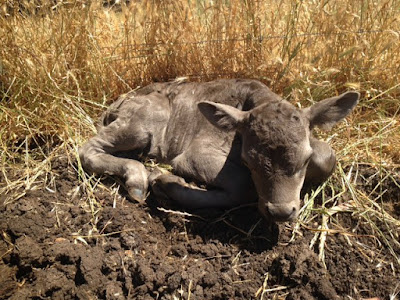It's not Christmas without Honey Biscuits, and because a few people have asked me for my recipe and how to bake them, I thought it easiest to show, rather than just give out a recipe.
As with most old recipe books, the instructions leave a lot to the imagination, as you can see here. So for the novice Honey Biscuit baker here is the way I've found works best for me.
I always make half a batch. A full batch takes all day, so I'm going to give you the ingredients already cut down to a half batch.
Ingredients;
1 tablespoon of butter500g honey
1 and 1/4 cups of sugar
2 eggs
1 and 1/2 teaspoons of bi-carb soda
1/4 - 1/2 teaspoon ground cloves
1/4 teaspoon ground nutmeg
1 small teaspoon cinnamon
1 small teaspoon ground allspice
1/2 teaspoon mixed spice
Plain flour - approx 4 - 5 cups
Method;
Melt butter, honey and sugar in a saucepan together.In a large mixing bowl beat together the eggs and all of the spices.
Mix into the egg mixture, 1 cup of flour and beat until well mixed.
Pour in a small amount of the melted honey mixture and mix well, then add more flour, mix well.
(The aim is not to cook the egg by pouring in the hot honey mixture)
Add the remaining honey melted mixture and mix well.
Keep adding flour and mixing until it becomes impossible to mix any more without breaking your hand or your spoon.
At this point, more flour is still required to achieve the right consistency, but there's a way to do it that is much easier.
Cover and leave for an hour or overnight, before rolling out and cutting into shapes.
Bake in a moderate oven for approx 10 minutes or until slightly colored.
Alternate adding of the flour, and the melted honey mixture to the eggs and spices.
Keep adding flour until you can't mix it any more without breaking your spoon.
The dough will look like this.
Cover the bowl and leave for a least an hour, or overnight if you want to.
When you're ready to bake the biscuits, cut a lump off using a knife.
Flour your bench well and knead more flour into the dough until it reaches the correct consistency, which is just past the sticky stage. It should not be sticky.
Form into a flat ball and gradually press it out flat.
Then roll it out with a rolling pin. Be sure to have enough flour under the dough so it doesn't stick to the bench, and move it around a bit to make sure it's not stuck.
This is the thickness I prefer.
Cut into shapes.
Bake in a moderate oven for approximately 10 minutes, or until lightly browned.
When slightly cooled, lift off the baking tray with a flat knife and cool on cake cooling racks.
Save all the scrappy cut out bits and roll into a new ball.
The scrappy bits will roll out again until all the dough is used up.
Wait until cool before icing with a thin mix of icing sugar and water. (Food coloring can be added) Mix well, spoon into a zip lock bag with a tiny hole cut into one corner, and squeeze onto each biscuit.
I find it's easiest to place all of the biscuits out on the kitchen table in rows, then it's a quick squirt and swirl over each biscuit.
I'll ice these tomorrow morning. I don't want to look at another honey biscuit until then!! but you can see last year's Iced honey biscuits here.
Honey biscuits are really quite simple to make when you know how and with a few little tricks up your sleeve.
I hope you will give them a go, but stand back, everyone loves them so you might need to hide some for later. Oh, and they keep well too, in an airtight container or glass jars.
I'd love to know how yours turn out when you bake them.
:) X Cheers!

















































